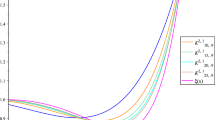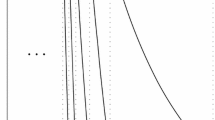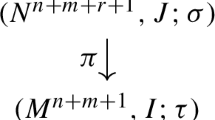Abstract
In a famous paper published in 1951 (Natl Bur Stand Appl Math Ser 12:36–38, 1951), von Neumann presented a simple procedure allowing to correct the bias of random sources. This procedure introduces latencies between the random outputs. On the other hand, algorithms such as stream ciphers, block ciphers, or even modular multipliers usually run in a number of clock cycles which are independent of the operands’ values: feeding such hardware blocks with the inherently irregular output of such de-biased sources frequently proves tricky and is challenging to model at the HDL level. We propose an algorithm to compensate these irregularities, by storing or releasing numbers at given intervals of time. This algorithm is modeled as a special queue that achieves zero blocking probability and a near-deterministic service distribution (i.e., of minimal variance). While particularly suited to cryptographic applications, for which it was designed, this algorithm also applies to a variety of contexts and constitutes an example of queue for which the buffer allocation problem can be solved.



Similar content being viewed by others
Notes
Kendall’s notation is the standard system used to describe and classify queueing nodes: an a / b / c queue receives inputs from a distribution a, has output distribution b, and uses c servers. As is standard, G denotes a general distribution, and D a degenerate distribution.
A similar problem is met when RSA primes must be injected into mobile devices on an assembly line. Because the time taken to generate a prime is variable, optimizing a key injection chain is not straightforward.
References
Balsamo, S., de Nitto Personé, V., Onvural, R.: Analysis of Queueing Networks with Blocking, vol. 31. Springer, Berlin (2013)
Demir, L., Tunali, S., Eliiyi, D.T.: The state of the art on buffer allocation problem: a comprehensive survey. J. Intell. Manuf. 25(3), 371–392 (2014)
Ganesh, A.J., O’Connell, N., Wischik, D.J.: Big Queues. Springer, Berlin (2004)
Kendall, D.G.: Stochastic processes occurring in the theory of queues and their analysis by the method of the imbedded Markov chain. Ann. Math. Stat. 23(3), 338–354 (1953)
Khinchine, A.: Mathematical theory of a stationary queue. Mat. Sb. 39, 73–84 (1932)
Kleinrock, L.: Queuing Systems, vol. 1. Wiley, New York (1975)
Little, J.D.: A proof for the queuing formula: \(l= \lambda w\). Oper. Res. 9(3), 383–387 (1961)
MacGregor Smith, J., Cruz, F.: The buffer allocation problem for general finite buffer queueing networks. IIE Trans. 37(4), 343–365 (2005)
Nahas, N., Ait-Kadi, D., Nourelfath, M.: A new approach for buffer allocation in unreliable production lines. Int. J. Prod. Econ. 103(2), 873–881 (2006)
Pollaczek, F.: Über eine aufgabe der wahrscheinlichkeitstheorie. I. Math. Z. 32(1), 64–100 (1930)
Pollaczek, F.: Über eine aufgabe der wahrscheinlichkeitstheorie. II. Math. Z. 32(1), 729–750 (1930)
Seong, D., Chang, S., Hong, Y.: Heuristic algorithms for buffer allocation in a production line with unreliable machines. Int. J. Prod. Res. 33(7), 1989–2005 (1995)
Spinellis, D.D., Papadopoulos, C.T.: A simulated annealing approach for buffer allocation in reliable production lines. Ann. Oper. Res. 93(1–4), 373–384 (2000)
von Neumann, J.: Various techniques used in connection with random digits. Natl. Bur. Stand. Appl. Math. Ser. 12, 36–38 (1951)
Author information
Authors and Affiliations
Corresponding author
Rights and permissions
About this article
Cite this article
Ferradi, H., Géraud, R., Maimuţ, D. et al. Regulating the pace of von Neumann correctors. J Cryptogr Eng 8, 85–91 (2018). https://doi.org/10.1007/s13389-017-0153-x
Received:
Accepted:
Published:
Issue Date:
DOI: https://doi.org/10.1007/s13389-017-0153-x




